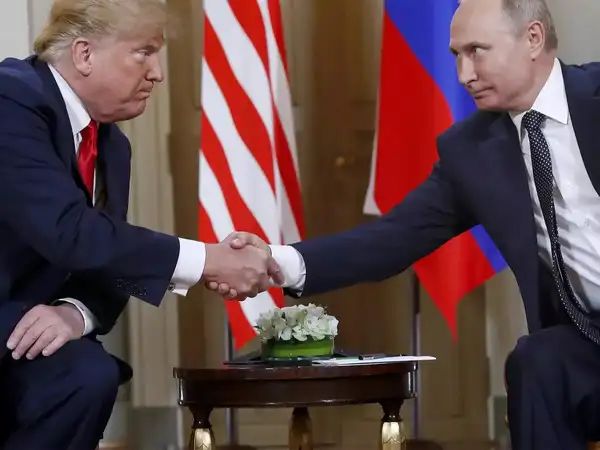 Image Source: Economic Times
Image Source: Economic Times
As global attention zeroes in on Anchorage, Alaska, US President Donald Trump and Russian President Vladimir Putin have arrived for a high-stakes summit that could reshape the trajectory of the war in Ukraine. With expectations oscillating between cautious optimism and deep skepticism, Trump has made clear his desire for a rapid ceasefire—but also admitted that nothing is guaranteed.
Key Takeaways from Trump’s Pre-Summit Remarks
Trump stated he wants to see a ceasefire “rapidly” and would be “unhappy” if it doesn’t happen today.
He emphasized that “nothing is set in stone” and admitted he doesn’t know what would make the summit a success.
Trump dismissed European influence, saying “Europe’s not telling me what to do.”
He warned that if the meeting doesn’t go well, he would “head back home real fast.”
Summit Objectives and Uncertainties
The summit, held at Joint Base Elmendorf-Richardson, marks the first face-to-face meeting between Trump and Putin since Trump’s return to the White House. While the stated goal is to negotiate a ceasefire in Ukraine, Trump’s comments suggest a fluid and reactive approach.
Trump has not defined clear metrics for success, saying he’ll “know within minutes” if the meeting is productive.
He floated the idea of a second meeting involving Ukrainian President Volodymyr Zelenskyy, but only if today’s talks go well.
The US delegation includes Secretary of State Marco Rubio and Special Envoy Steve Witkoff, both of whom lack formal foreign policy experience.
Strategic Stakes and Global Reactions
The summit carries significant geopolitical weight. Russia continues to occupy roughly 20 percent of Ukrainian territory, including the Donbas region and Crimea. European leaders have expressed concern that Trump may entertain territorial concessions in exchange for peace.
Trump has hinted at “some swapping, changes in land,” though he insists Ukraine must make its own decisions.
European allies are wary of any deal that rewards Russian aggression or excludes Ukraine from the negotiation table.
Ukrainian President Zelenskyy has warned that “concessions do not convince a killer,” emphasizing that Russia must face consequences for continued hostilities.
Economic Leverage and Sanctions Threats
Trump has signaled that economic pressure remains a key tool if diplomacy fails. He has threatened “very severe consequences” for Russia, including potential sanctions targeting oil majors like Rosneft and Lukoil.
Trump suggested that business discussions with Russia could resume only if progress is made on ending the war.
The Kremlin has brought economic heavyweights to Alaska, including Finance Minister Anton Siluanov and sovereign wealth fund chief Kirill Dmitriev.
Trump’s openness to economic engagement has drawn criticism from European leaders, who fear premature normalization could undermine sanctions.
Symbolism and Setting
The choice of Alaska as the summit venue is laden with historical and strategic symbolism. Once part of the Russian Empire, Alaska was sold to the US in 1867. This marks the first time a Russian leader has visited the state.
A red carpet and fighter jets greeted both leaders, underscoring the gravity of the moment.
Putin is expected to lay flowers at the tomb of Soviet pilots in Alaska, a gesture likely aimed at invoking shared history.
Final Thoughts
Trump’s remarks ahead of the summit paint a picture of a leader relying on instinct and improvisation. While he insists he’s not negotiating on Ukraine’s behalf, his role as a broker could shape the contours of any future peace deal. Whether today’s meeting yields a breakthrough or ends in a swift exit remains to be seen—but the world is watching.
Sources: FXStreet, Reuters, Al Jazeera, Indian Express, Politico
Advertisement
Advertisement





